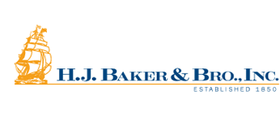
What Corp Dev Professionals can Teach You about Targeted Sourcing

Late last year we found that specialized acquirers, who represent more targeted mandates, receive better deal flow and waste less time reviewing irrelevant deals. The research showed a few interesting trends, including that even generalist firms are refining their acquisition mandates. Specialization sounds great in theory, but how do you actually execute a more precise acquisition strategy? One way is to analyze the way corporations in very narrow niches have approached finding deals.
We looked at two different strategies, one for an agricultural business expanding their value chain and another from a medical devices company seeking the next new thing. Adam Piotrowski, formerly of Stryker, and Arthur Bentley of HJ Baker and Bros, explained that sourcing deals in specialized niches requires a different set of skills than traditional deal sourcing, but can produce a rich vein of deals when done well.
Cover Traditional Channels, Just Differently
Generalists making acquisitions sometimes forget that bankers are only going to invite a few people into a process for each company. Having the reputation as a party looking to do deals in a specific niche dramatically increases your likelihood of being invited into the process, especially for interesting and specialized deals. Additionally, a smaller number of participants means a better chance at completing the acquisition. Both Piotrowski and Bentley mentioned that they always covered the traditional deal sources including reaching out to bankers, especially bankers who are focused on their industries.
Building connections with the right people when seeking niche opportunities is similar to traditional networking, just more targeted. As Piotrowski noted, “Don’t discount calling your network, especially your industry network, and attending events. In the medical space there are practice-specific conferences and symposia, annual tradeshows, and regional groups where you need to be connecting. Go there, put on your networking hat, build relationships at the events, and then pick up the phone from time to time to chat. Often your industry contacts will know about stealth companies you may not have known about otherwise.”
Targeted and Relevant Deal Flow
6,121 Members. 151,282 connections made. All on the Axial Network.
Understand Drivers to Anticipate Deals
By focusing on a more narrow subset of companies, more specialized acquirers can get a better understanding of which companies are most likely to come to market or are ripe for an offer. Having a full picture of the supply chain within an industry can further refine where to look for the most promising opportunities. For Bentley and HJ Baker, having a really good understanding of the historical market has helped. As Bentley explained, “from the 1950’s through the beginning of the 2000’s the price of corn traded in a range from $1.50 to $2.50 a bushel. That was the actual price, not adjusted for inflation. Over the last 2-3 years the price has soared to $6-7 a bushel. Recently China started importing corn from the United States and more recently the US passed ethanol mandates, further adding demand pressures. With the high price of corn everyone wants to grow more and thus can afford to buy more fertilizer. Anyone serving farming these days is booming.”
In more technical or invention driven market, being able to anticipate what’s coming next can be a significant differentiating factor. At Stryker, Piotrowski’s research was focused on giving him understanding beyond the facts on the surface. As he explained, “Some of the big tech blogs are the best at this. They look at supplier order amounts, FCC filings, radio and airwave spectrum requests by companies, and other more obscure reports to figure out what’s going to come next from all the big players or even what’s going to happen to the smaller players. Sometimes even the USPTO can be relevant. It’s often that level of detective work is necessary in order to figure out which companies are worth investing in.”
Looking Beyond the Obvious
Generalists are often able to understand companies according to metrics normalized across a large number of deals, but may miss the synergies where industries interlock. One of the major advantages that both Piotrowski and Bentley noted was that they were able to help their internal teams think beyond obvious acquisition targets. While looking at the direct supply chain or in the company’s customers as ideas for where to make acquisitions is valuable, sometimes you have to really push the company. Bentley told us that he “identifies areas of growth the company didn’t think of. Since the company is doing their job operating, they aren’t always thinking about what’s coming next.”
Some of the best ways to look beyond the obvious can be related to how news is filtered. Piotrowski said that “every industry has their specialized news portals, you just have to find them and put them on a regular feed. In medical devices there are a variety of networking groups, trade associations, universities publishing news releases, and regulatory entities that all affect our targets.” Being able to understand the implications of new regulations or recent clinical research gave him an advantage as an acquirer and allowed him to make a more competitive bid as compared to lesser informed parties and also helped him avoid thorny deals.